
Choose perennial sunflowers for a perfect fit. They are easy to care for. They also have long lasting, fall blooms.
Late in the season, perennial sunflowers are an ode to the beloved summer’s end. Perennial sunflowers lift our spirits, just when the leaves start to change.
Usually, the idea of sunflowers in the garden are the tall, single-headed giants. Or the gorgeous, sun-worshiping fields of large golden-headed flowers. These are the annual version of these long-lasting perennial flowering plants.
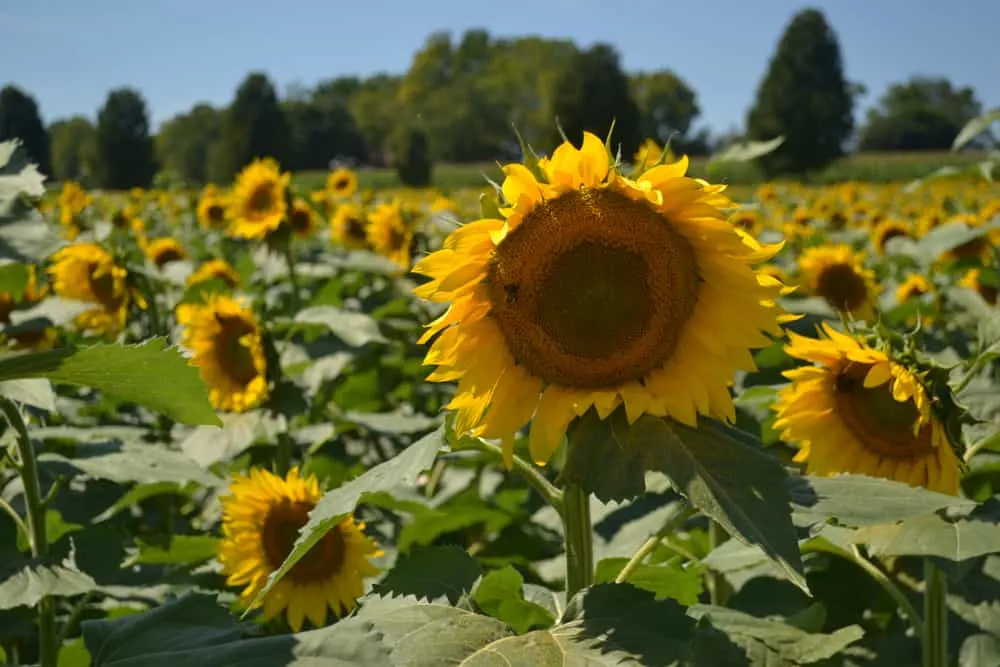
Diverse Kinds of Perennial Sunflowers
Sunflowers are North, Central, and South American natives. There are over 70 species in this incredibly interesting genus of plants.
Many perennial species are clump forming and multi stemmed.
Perennial sunflowers thrive in full sun. Not surprisingly, they bloom more prolifically in the sun.
Depending on the species, perennial sunflowers love a variety of growing conditions. Some like it hot and dry with poor to sandy soil. At the same time, some species prefer moist areas in rich fertile soils.
From Easy Spreading to Incredibly Rare
Some perennial sunflower species are incredibly rare, and hard to find. In fact, some species of perennial sunflowers are endangered or at risk.
The rarest species is found in the Piedmont areas of the Carolina states. It is known as the Schweinitz’s sunflower.
On the other hand, many other perennial sunflowers, such as the Maximilian sunflower, tolerate a wide range of ecosystems. Interestingly, this allows them to naturalize outside of their native range, often spreading easily.
Sunflowers are a Fascinating Flower
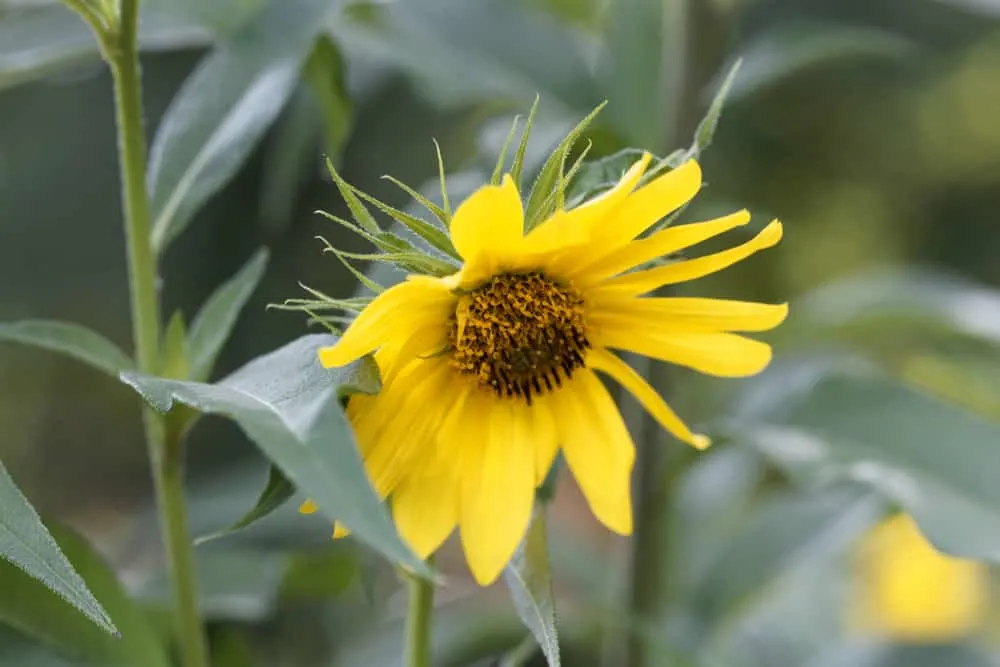
Sunflowers are of the genus, Helianthus, of the Asteraceae family of flowering plants.
Other plants from this family are daisies, and not surprisingly, asters. The flowers of this family are known as composite flowers.
Interestingly, what appears to be a single flower is misleading. In reality, it is a composition of a tightly packed cluster of flowers surrounded by colorful bracts.
Sunflowers are an excellent example of composite flower forms. In annual sunflowers, for example, each individual flower makes a seed. Uniquely, the rays or bracts which surround the flower cluster helps to attract pollinating insects.
5 Reasons To Grow Perennial Sunflowers
1. Edible Garden
Perennial sunflowers make an excellent addition to an edible, permaculture, or survivor garden. They are popular additions to food forests. This is because many of the native species of sunflower are a food source.
Notably, indigenous populations throughout North and Central America used them. Helianthus tuberosus, or Jerusalem Artichoke is well known for its tasty roots. Harvest Jerusalem artichoke in the fall. Eat them raw or cooked.

2. Wildflower Garden
Many perennial sunflowers are incredibly easy to grow. They make a wonderful addition to a wildflower garden. Wildflower gardens are visually lovely. Importantly, caring for perennial sunflowers is easy. Perennial sunflowers in the wildflower garden can help make it spectacular.
3. Native or Naturalized Garden
As perennial sunflowers are native plants. They may effortlessly naturalize. It is important to keep tabs on plants that are at risk or endangered. In other words, create space for them. This helps to stabilize at-risk plant populations.
4. Pollinator Garden
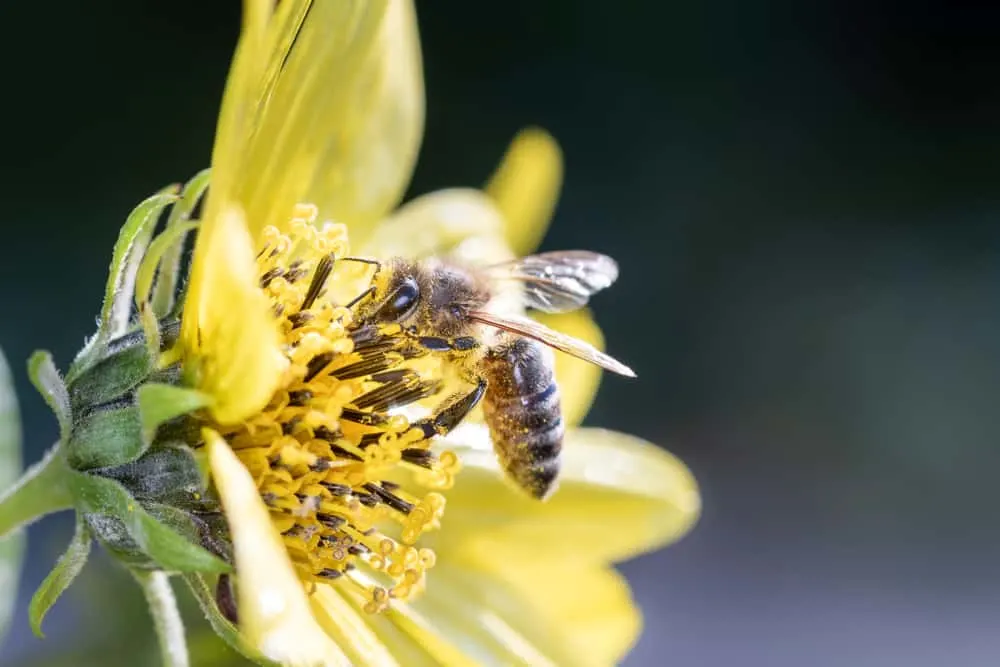
Of course, growing plants with the intention of inviting our pollinating friends is always a great idea. Perennial sunflowers provide food, nectar, and shelter for many pollinating insects as well as birds. This in turn helps keep their populations thriving as well.
5. Fall-Blooming Garden
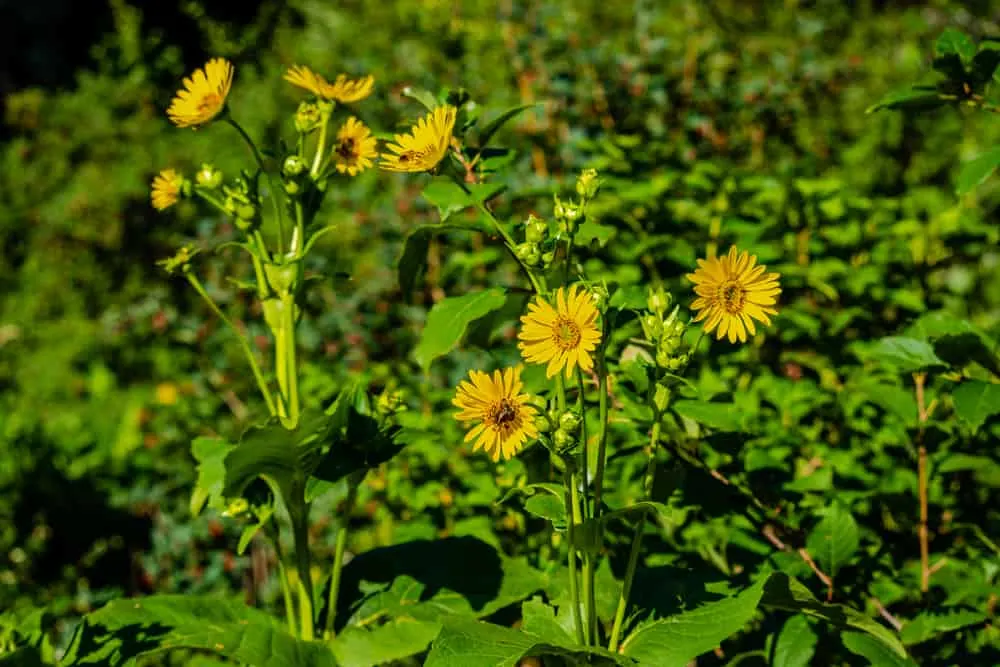
In addition to the above mentioned, low-maintenance styles of gardens, perennial sunflowers extend the bloom season into fall.
A perennial garden is often at risk of fading out at the end of summer. Notwithstanding, there are some great plant choices with spectacular blossoms right through autumn.
Some perennial sunflower fall-blooming friends are asters, daisies, mums, coneflowers, and sedum.
7 Perennial Sunflowers That Bloom Year After Year
1. Ashy sunflower (Helianthus mollis)
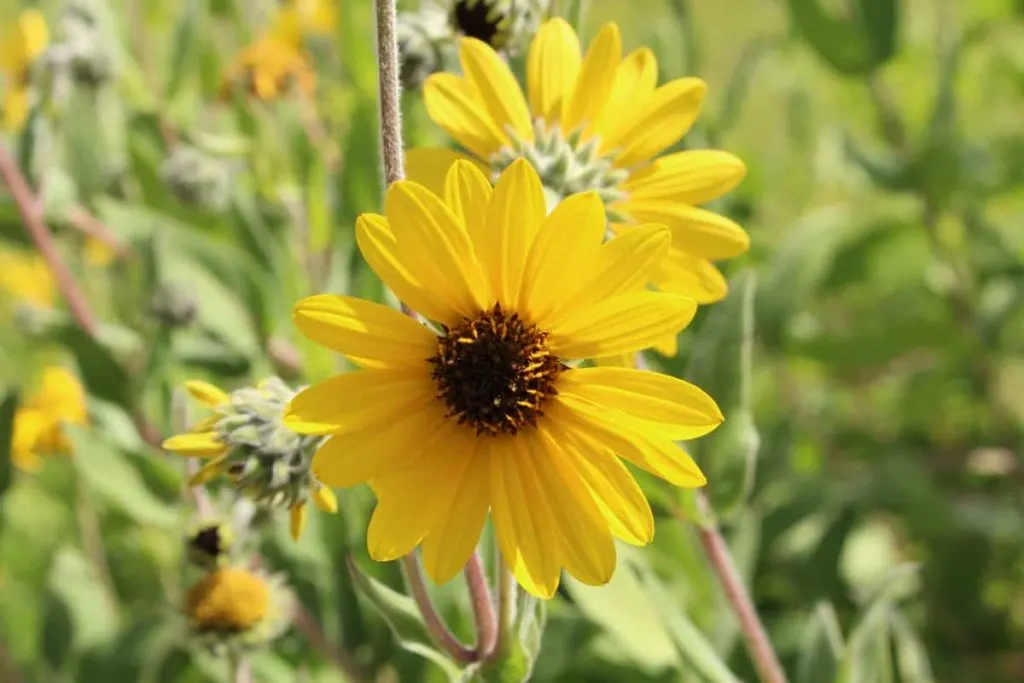
Ashy sunflower blooms from July to September.
Interestingly, Ashy sunflower’s native range is Central and Eastern US states.
This long-blooming sunflower thrives in full sun in poor, sandy to gravelly soils. It grows to a height of 2 to 4 feet, spreading 1 to 3 feet.
Bird populations including Goldfinches prize the seeds of Ashy sunflowers.
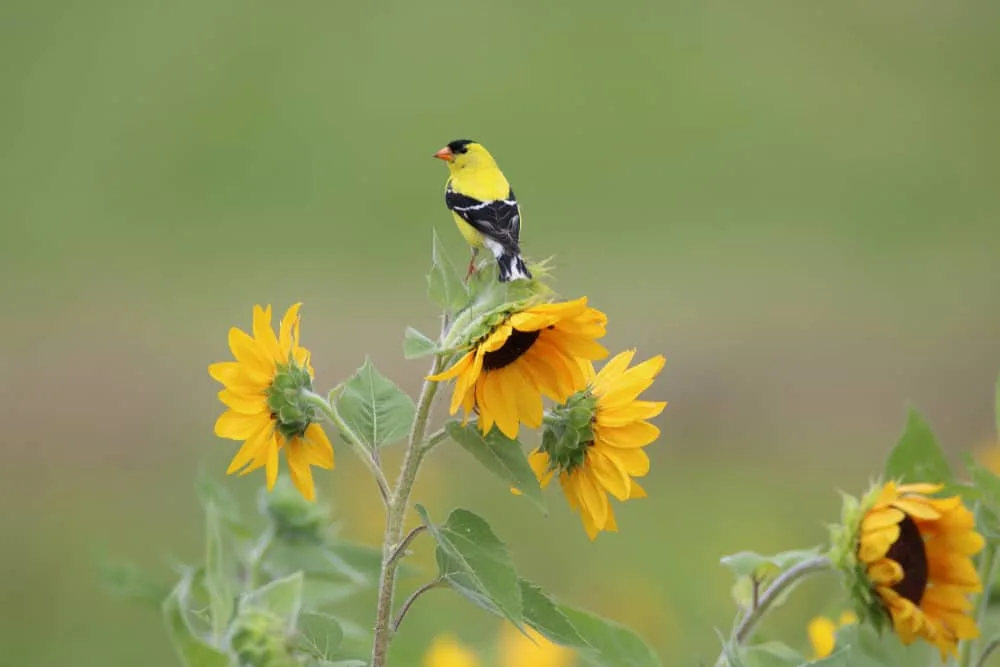
It is a colony forming sunflower perfect for naturalizing. Moreover, if allowed, it may colonize an area by rhizomes and seed.
Good drainage is a must for this showy sunflower. It is an herbaceous perennial hardy in zones 4 to 9.
2. Western sunflower (Helianthus occidentalis)
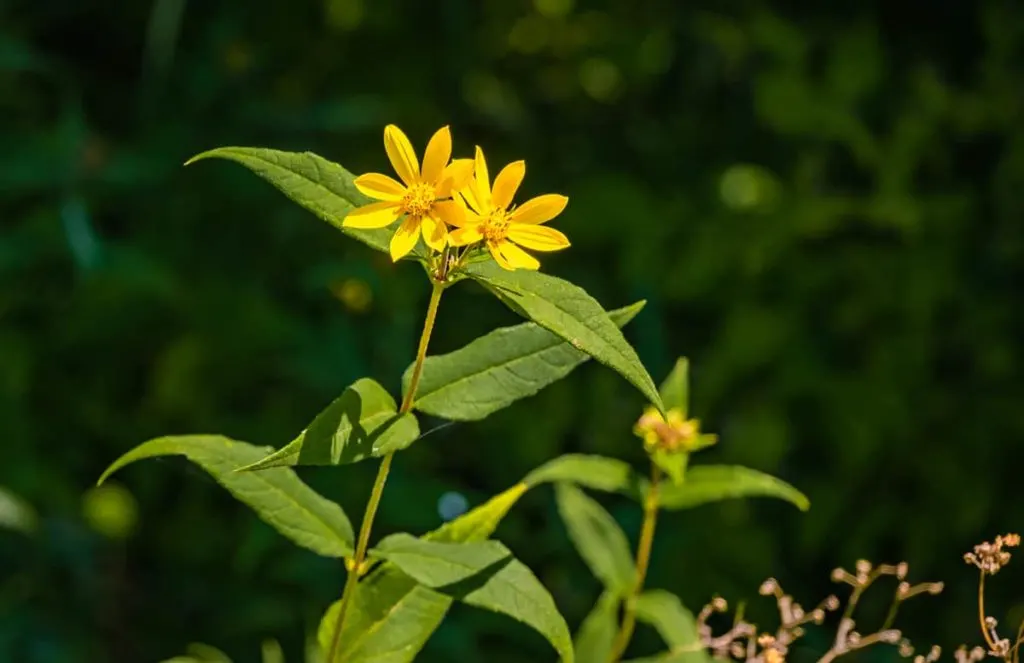
Western sunflower is an excellent choice for late season cut flower arrangements.
It might be assumed that western sunflower is found in western North America. But in fact, it is native to Central and Eastern North America. It is native to the west, as in not from Europe.
Western sunflower is great at stabilizing soil. It also thrives in a wide range of soils including rocky sandy soils in full sun. However, the clump-forming plants are less tolerant of heavy clay soils.
They benefit from division as they slowly spread by underground rhizomes.
Hardy in zones 4 to 8. Western sunflower normally reaches 2 to 3 feet in height. The 2-inch orange-yellow blooms are long lasting. They arrive in late summer and early fall.
3. Swamp sunflower (Helianthus angustifolius)
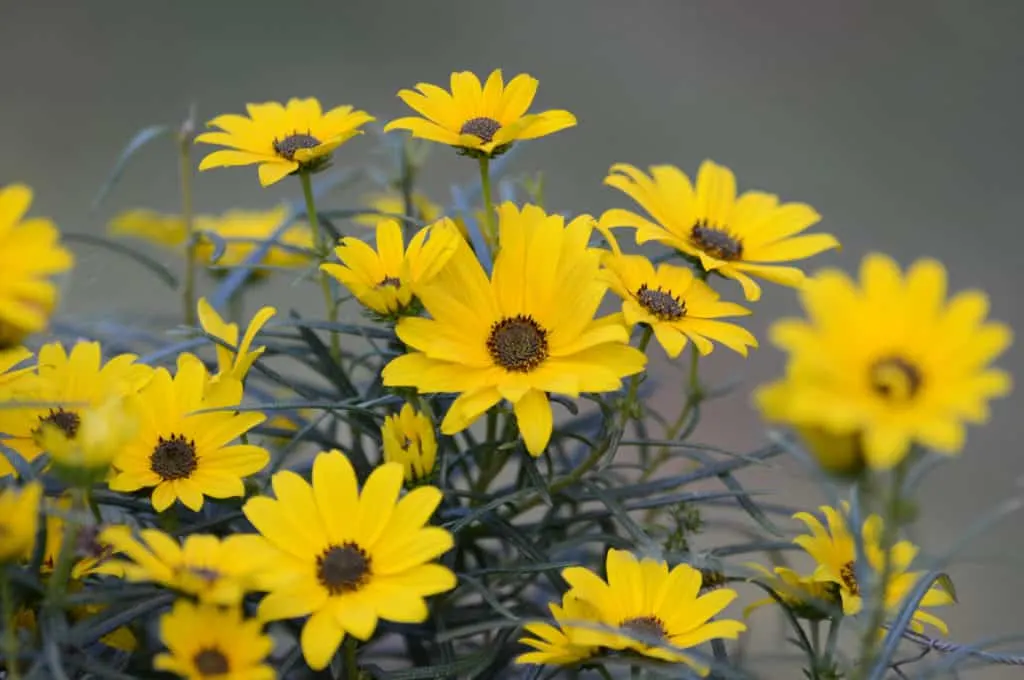
An important perennial for many native bees. Swamp sunflower, as the name suggests, thrives in moist, wet, and boggy soils.
One of the tallest sunflowers, swamp sunflower generally reaches 5 to 7 feet. But it can grow up to 10 feet tall.
Hardy in zones 5 to 9. You can find swamp sunflower in the eastern USA from New York to Florida and east to Missouri, Texas, and Oklahoma.
Look for it in open marshes, meadows, floodplains, and bottomland forests.
Swamp sunflower is an important nectar and food source for late migrating butterflies and birds.
The tall stems terminate in 2-to-3-inch yellow flowerheads. In fact, they are the last sunflowers to bloom.
Bloom time begins in late September or early October. The brown seed heads persist through winter. This provides winter food for birds.
4. Giant sunflower (Helianthus giganteus)
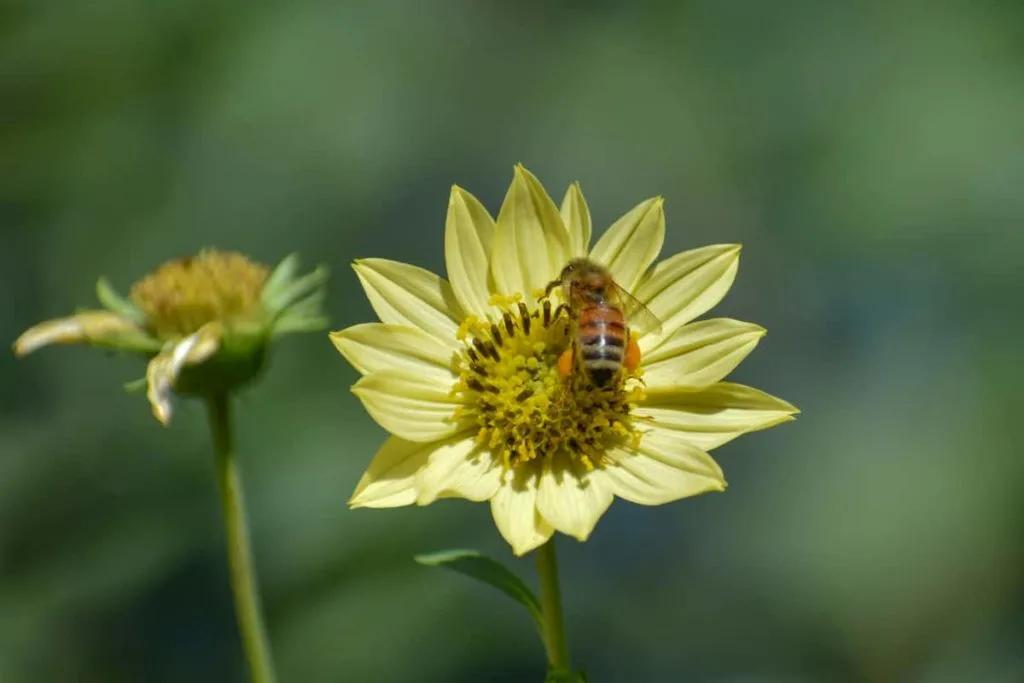
Giant sunflower is a perennial most like the familiar annual sunflowers. This is because the flowers grow on 3- to 9-foot-tall central stems.
Giant sunflower attracts many birds, butterflies, and bees. They do this by providing nectar, food, and shelter for a large variety of species.
Like swamp sunflower, giant sunflower also thrives in moist to wet marshy areas and woodlands. Additionally, find giant sunflower in eastern areas of Canada and the US.
This fast-growing sunflower blooms in July to September.
The blossoms are large 2-to-3-inch golden yellow flowers with dark yellow centers. The tubers of giant sunflower are edible and tasty when cooked. The tiny seeds are also edible raw or cooked.
5. Cheerful sunflower (Helianthus x laetiflorus)
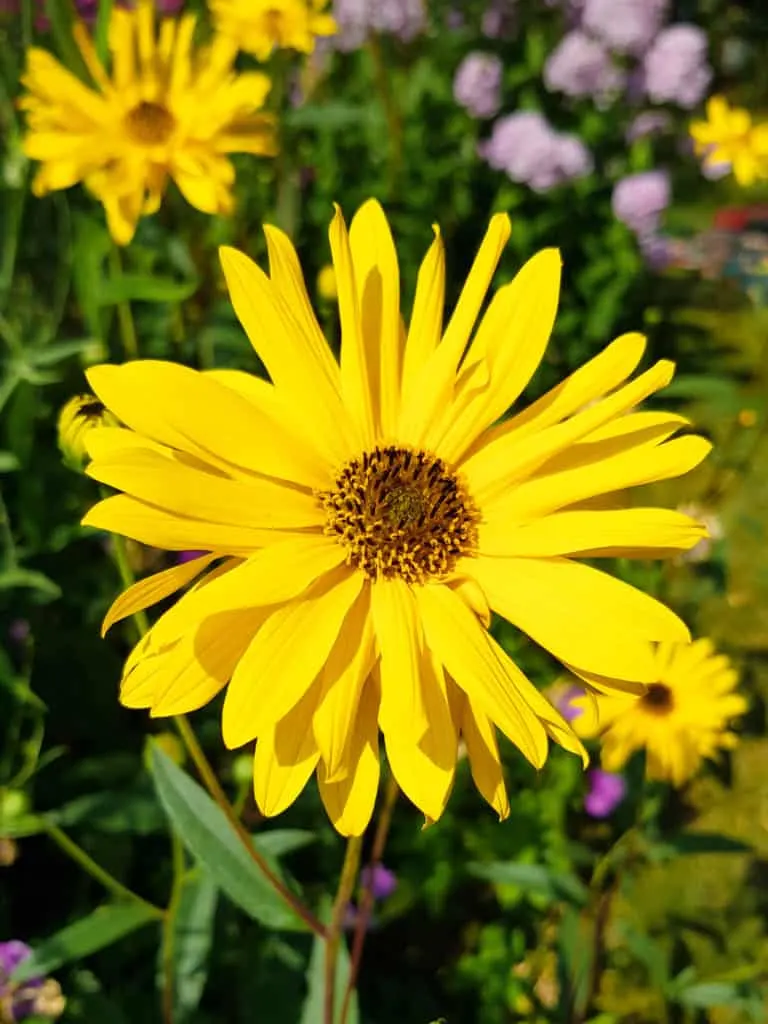
The name says it all with this lovely, cheerful long-blooming sunflower.
The large 2 to 3 ½ inch flowers bloom from August through to November in some areas.
The long petals are deep butter yellow, surrounding an almost red center. Growing 6 to 7 feet tall, cheerful sunflower takes the heat. It thrives in dry hot conditions. Similarly, cheerful sunflower loves full sun and well-draining soils.
Scattered populations of cheerful sunflower are found throughout the US and Canada. It is hardy in zones 4 to 8.
Additionally, the roots or tubers of this sunflower are edible. They are not particularly productive.
6. Maximilian sunflower (Helianthus maximiliani)
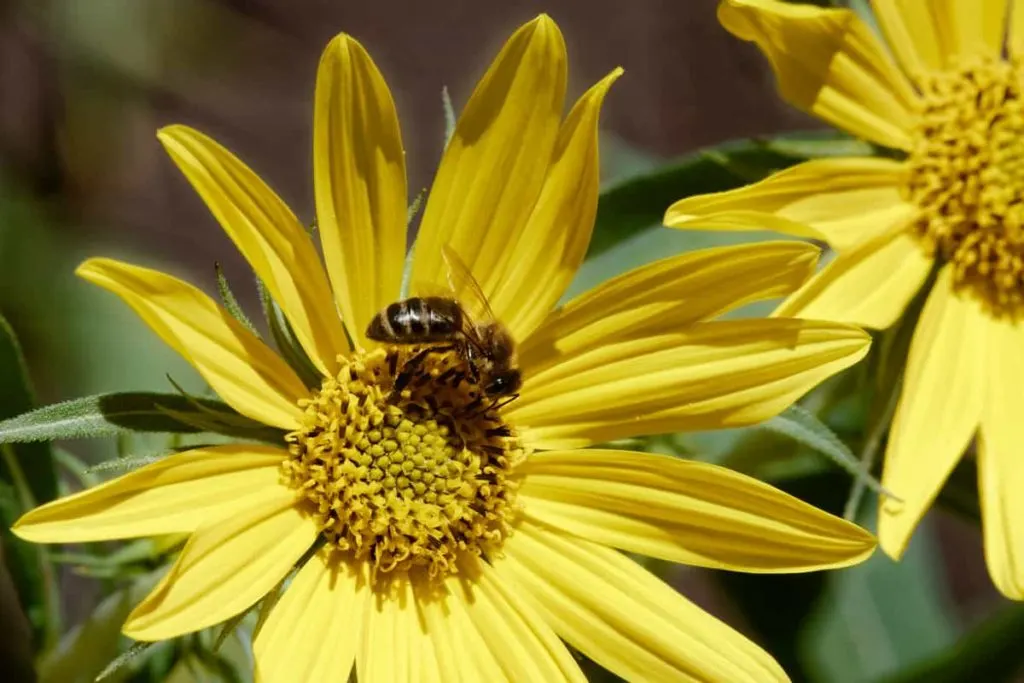
The showy flowers of Maximilian sunflower make it a favorite for wildflower gardens and perennial borders. It also naturalizes easily. This is because of its ability to self-seed.
This large perennial sunflower is easy to grow. It tolerates many soil conditions including dry to moist soils. Furthermore, it even tolerates drought and clay to sandy soils. This makes it a great fit for many gardens.
Maximilian sunflower grows 3 to 10 feet tall. This may depend on moisture levels. It is hardy in zones 4 to 9.
Maximilian sunflower is an excellent choice for attracting late-season birds and butterflies. This is because Maximilian sunflowers bloom August to September. Significant, showy, large flowers are 2 to 3 inches across. They are bright yellow with deeper yellow centers.
7. Jerusalem artichoke (Helianthus tuberosus)
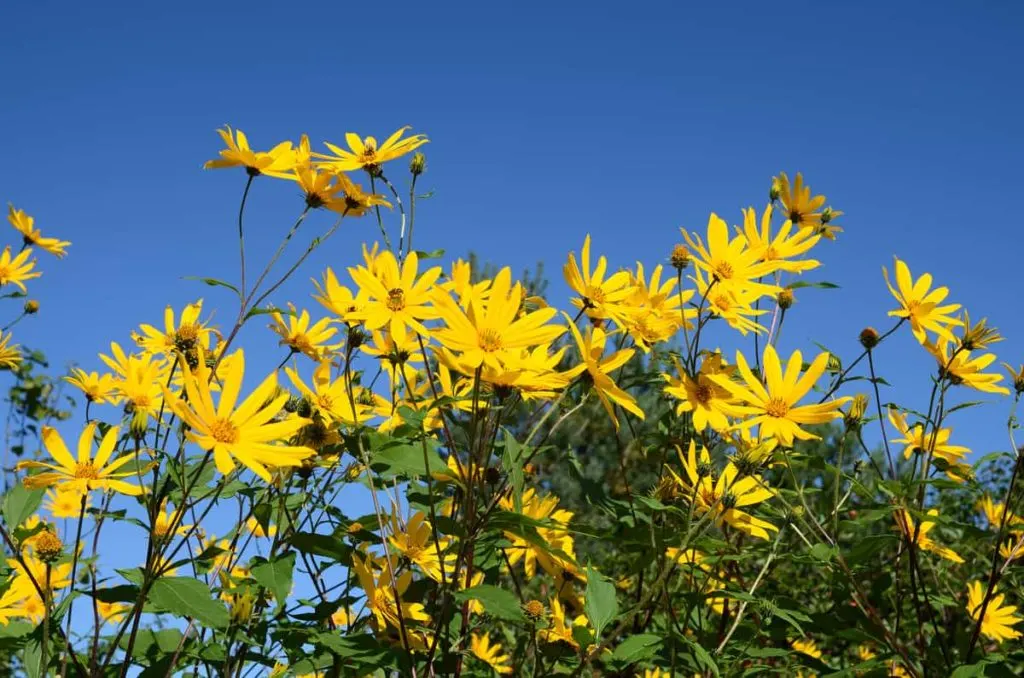
Jerusalem artichoke or sunchoke is often at the top of every food forest and permaculture list.
This famously edible sunflower has delicious roots. At the same time, they also make gorgeous cut flowers.
Hardy in zones 3 to 9. This versatile perennial grows 6 to 10 feet tall.
It is low maintenance and grows in moist or dry well-draining soil in full sun.
Flowers are bright yellow. Often, flowers reach 2 to 4 inches across.
They bloom from August to the end of September.
Jerusalem artichoke is so easy to grow it can become weedy in some areas.
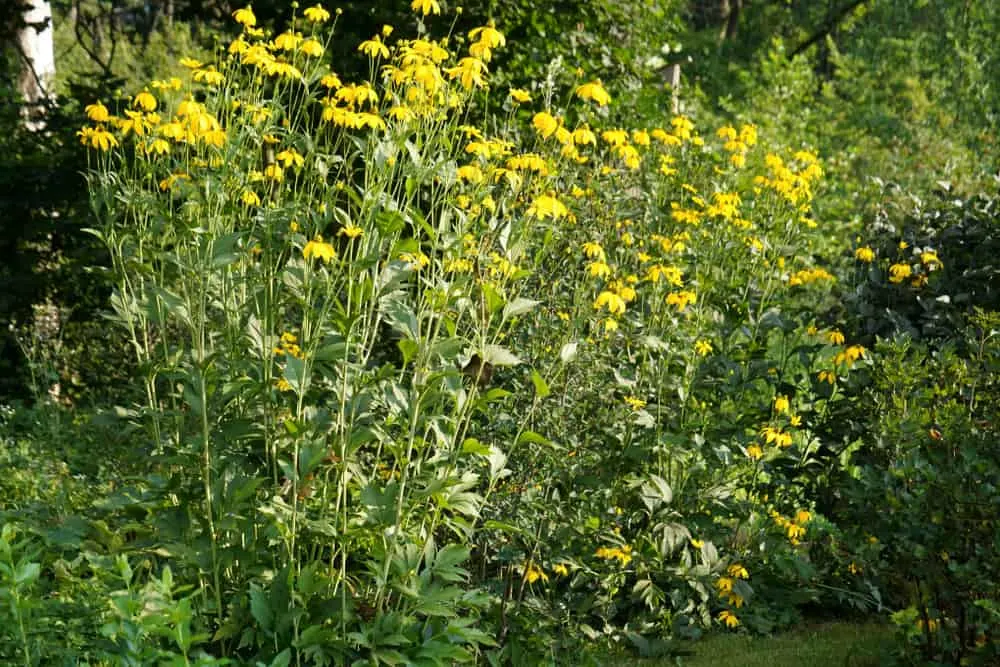
The versatility of this interesting sunflower is nearly limitless. An excellent choice for cut flower gardens, native, and wildflower gardens. In particular, it is even exceptional in the vegetable patch. In fact, it may be the first perennial sunflower to grow in the blooming backyard!
Perennial sunflowers have so many uses. Particularly excellent for their fall-blooming and wildlife attracting qualities. Is there a perennial sunflower perfect for your blooming backyard?
